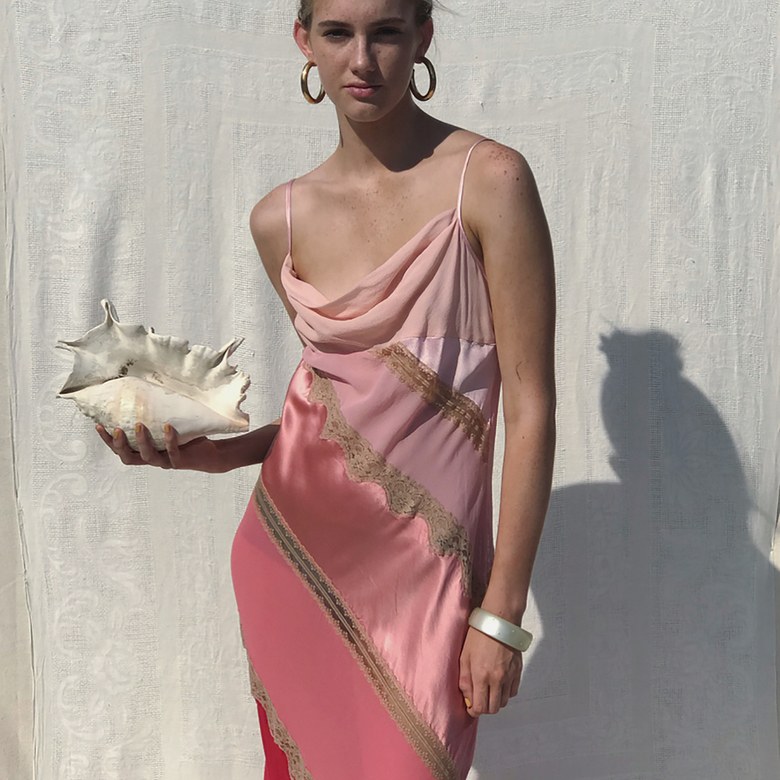Nothing beats the blissful sensations of scouring bins and racks at a musty-smelling vintage shop, unless, of course, it’s the blissful sensations of scouring bins and racks at a non-musty-smelling vintage shop. The physical rush that fashion obsessives experience inside a brick-and-mortar outpost selling Chanel tweeds from the 1980s and unlabeled corsets from the ’50s cannot be matched. If something comes close to that feeling these days, it’s the sense of accomplishment felt when clicking “buy” on a covetable piece, perhaps a nylon Prada bag from the early 2000s or a pair of Gianni Versace jeans circa 1990, sourced online after hours or days of searching. Getting into a bidding war over a John Galliano newspaper print Dior top on eBay is also exhilarating. So is realizing that you’ve found an original pair of Schiaparelli heels from a vendor on Etsy who resides in some small town in Louisiana.

Shopping for vintage on Instagram, on the other hand, is a whole other ball game. You never know when you will stumble on, say, a Courrèges jacket from the ’60s, on a platform where retail items aren’t funneled into one single space. You usually see a cool girl’s friend wearing something you don’t recognize in some well-appointed place, you click on the tag, and the tag takes you to a feed filled with vintage treasures for sale. The digital rabbit hole has deepened and online discovery of this kind is becoming even more rewarding. Independent retailers love this aspect of selling on Instagram. Though using the photo-sharing app as a sales platform is not strictly new, there has definitely been a rise in options as of late.
Whether based in Copenhagen or Chicago, young vintage fashion entrepreneurs are taking full advantage of the reach that Instagram can afford them. Some, like Alexis Kingery behind @ShopBlueDream, also find it easier and more thoughtful than anything else. “There really aren’t any specific platforms for vintage outside of Etsy, eBay, and Depop,” she says. “I find with those sites, there are too many fees, things are priced really high, and it’s just not as personable.” Gillian Brown of @EsmesDrawerToo agrees: “This platform helps people just starting out in the fashion industry earn a viable income, and you can do what you love without having to depend on other resources.”
Of course, there can be issues with international shipping. Because she can’t take on these costs yet, Kingery asks that her clients in Australia, Europe, and Asia provide a U.S. address for her to send the items to. Outside of those kinds of obstacles, though, these businesswomen seem to be thriving. Both Kingery and Brown have made their Instagram shops their full-time jobs.
